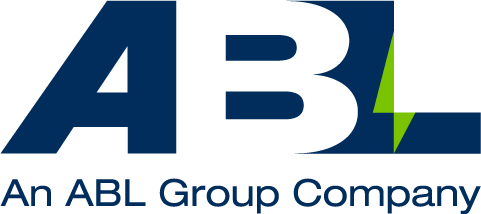How to de-risk “Master Data Migration and Transfer” programs
When a company embarks on a business merger or acquisition of a facility or multiple facilities, there are several critical success factors for assuring the process is implemented as seamlessly, morally, and efficiently as possible.
The CMMS, EAM or ERP sits at the heart of safe, effective, and efficient management of a facility, therefore the migration of the maintenance, materials and integrity data to a single, common platform can be critical to the success of a merger or acquisition.

In this blog, Andy Bell – a data migration expert from ABL, discusses common challenges associated with data migration, the risks and potential impact this can have on a business when it goes wrong and solutions to consider for setting a data migration project up for success.

Common challenges associated with data migration to a common platform
- CMMS architecture (backend tables and functionality) is unique for each CMMS, creating obstacles for effective data migration
- Extensive knowledge of the CMMS systems functionality and table relationships is a necessity
- Lack of appreciation for the significant cleansing work that needs to be completed prior to migration
- For example, SAP has completely different data standards and requirements in comparison to Maximo, and this will cause issues during migration if cleansing is not conducted up front
- Lack of in-house expertise on data migration to manage and execute the project in-house
- Challenging timelines with limited resources available to complete this project successfully
- A successful migration requires not only a team of CMMS Analysts, but also Engineers to manage engineering changes due to the differences in how the systems function and are configured (e.g., work order generation processes)
- Difficulties in coordination and implementing management of change, due to the extensive time requirements for successful transition, for example, managing open work orders during this period will be challenging without the correct knowledge
- Completely different CMMS systems will require a full re-train for all users, and this support is not always available in-house
Risks and impact associated with ineffective data migration to a common platform
Plant Downtime
Possible plant shutdown is one of the most significant impacts that can result from a poorly managed data migration project, this can be caused by an inability to demonstrate compliance with regulations that the company’s CMMS supports.
Safety Related Incidents
Increased exposure to safety integrity risks through loss of critical data (e.g., assurance tasks for safety critical elements) is a possibility.
Lack of Control
Loss of critical data can affect the reliability of the safety barriers and controls put in place, and thus the ability to make informed decisions can result in chronic unease and increased risk of potential incidents.
Reduced Productivity
Inability to use the CMMS functionality, affecting the efficiency and effectiveness of the maintenance program could result in reliability issues and an unmanageable maintenance backlog.
Reliability Issues
Architectural links being broken (e.g., maintenance not being applied correctly to the right equipment), incurring increased risk of breakdown and loss of production.
Competency Issues
Stakeholders not being able to use the system properly, exposing the facility to additional risks through lack of assurance measures.
The real-life impact of ineffective data migration
We at ABL have been involved in the clean-up of many unsuccessful data migration projects, conducted by inexperienced organisations or teams. Below is a flavor of some real-life accounts relating to the impact of poorly managed data migration projects, further highlighting the impact this can cause:
Drilling contractor
This client acquired a new drilling facility and the business wanted to centralise the CMMS data into one common platform by migrating from SAP to Maximo.
| What failed? | The impact this had |
| Loss of work order history | Loss of this critical data set meant that the team were unable to: Review and analyse data for optimisation opportunities Conduct thorough RCM or RCA for critical equipment Justify changes to the maintenance strategies |
| Maintenance work order numbers were corrupted | Corrupted work order numbers caused the following issues: Productivity reduced due to having to spend time interoperating the work orders through alternative methods Exposed the asset to risk by not being able to adhere to the maintenance regime Excessive maintenance backlog |
Oil and Gas Operator
In this case, two companies merged, and they had acquired assets from different operators and wanted to centralise their multiple CMMS data platforms into SAP.
| What failed? | The impact this had |
| Lost critical data attributes (name plate data, descriptions and tag numbers were corrupted) | This caused a raft of operational, reliability and integrity issues. One of the most significant impacts of this was an uncontrolled hydrocarbon release which was caused by the wrong specification of a PSV (pressure safety valve) being purchased and subsequently installed. The PSV that was purchased by the procurement team had a higher “relief” pressure popping point (due to the selection of internals), than the system it was installed to protect. This resulted in an over pressurisation of the system meaning the gas had to find a new escape path, resulting in an uncontrolled hydrocarbon release. |
Solutions to consider for de-risking your data migration initiative
ABL’s team of consultants and CMMS data management experts assure quality and efficiency and help companies meet timeline targets and minimise risk profiles by providing support using established processes. Below is a summary of some key considerations for others who are embarking on or considering a data migration project:
Data extraction
- Extract and download the master data set from CMMS into an independent database, at ABL we utilise our data management tool, Effio™ to control master data changes, standardise data sets and populate upload templates for the new CMMS
Data mapping and standardisation
- Mapping of data to historical data (e.g., SAP will require new PM/JP numbers (MP/ MI – SAP) to be assigned)
- Update links to the document management system
- Realign and reconfigure all CMMS data and attributes across all functional areas to align with CMMS functionality
Data Enrichment and Optimisation
- Master data cleansing and review to assure alignment with data standards e.g., ISO:14224
- Review and optimise maintenance strategies
- Review and optimise ‘Bill of Materials’.
- Allocate enriched maintenance and materials to tags
Test and Quality Assurance
- Run QA checks in the independent database prior to load into CMMS test environment
CMMS Load
- Load to test environment
- Load to live environment
- Post Go-Live review and benchmarking
- CMMS User Training
Introducing Effio™ – A faster, more efficient way to manage, build, optimise and migrate master data
Developed by award-winning asset management software engineers, designed by maintenance, integrity, and materials management experts.
ABL’s cutting-edge cloud-based software platform Effio™ adheres to a blockchain approach to managing the end-to-end process of a data migration project.
Using Effio™’s functionalities to manage, build, optimise and migrate CMMS data can save up to 30% on time required to complete this type of project, helping ensure a cost-effective, timely and quality solution for centralising your maintenance management system.



